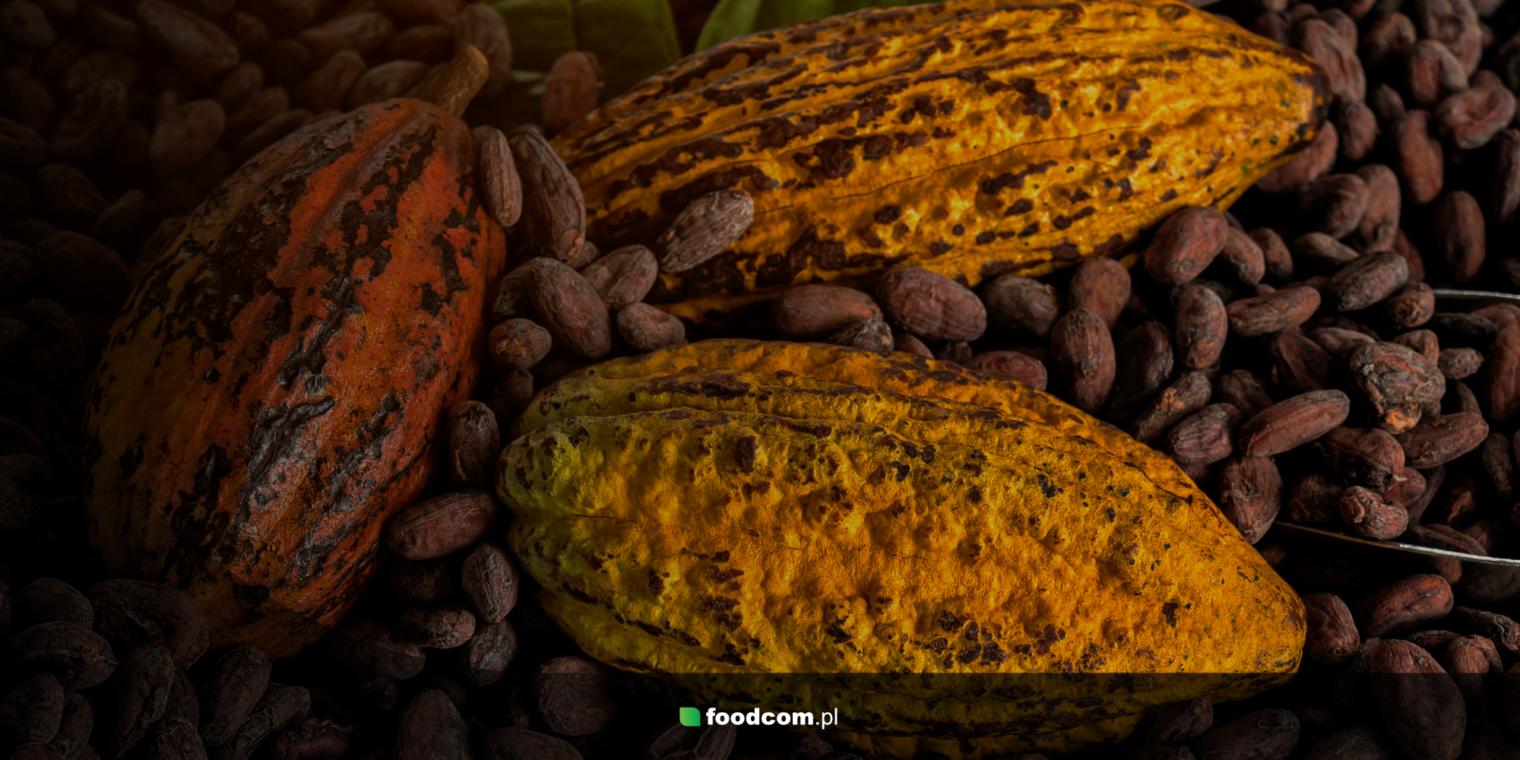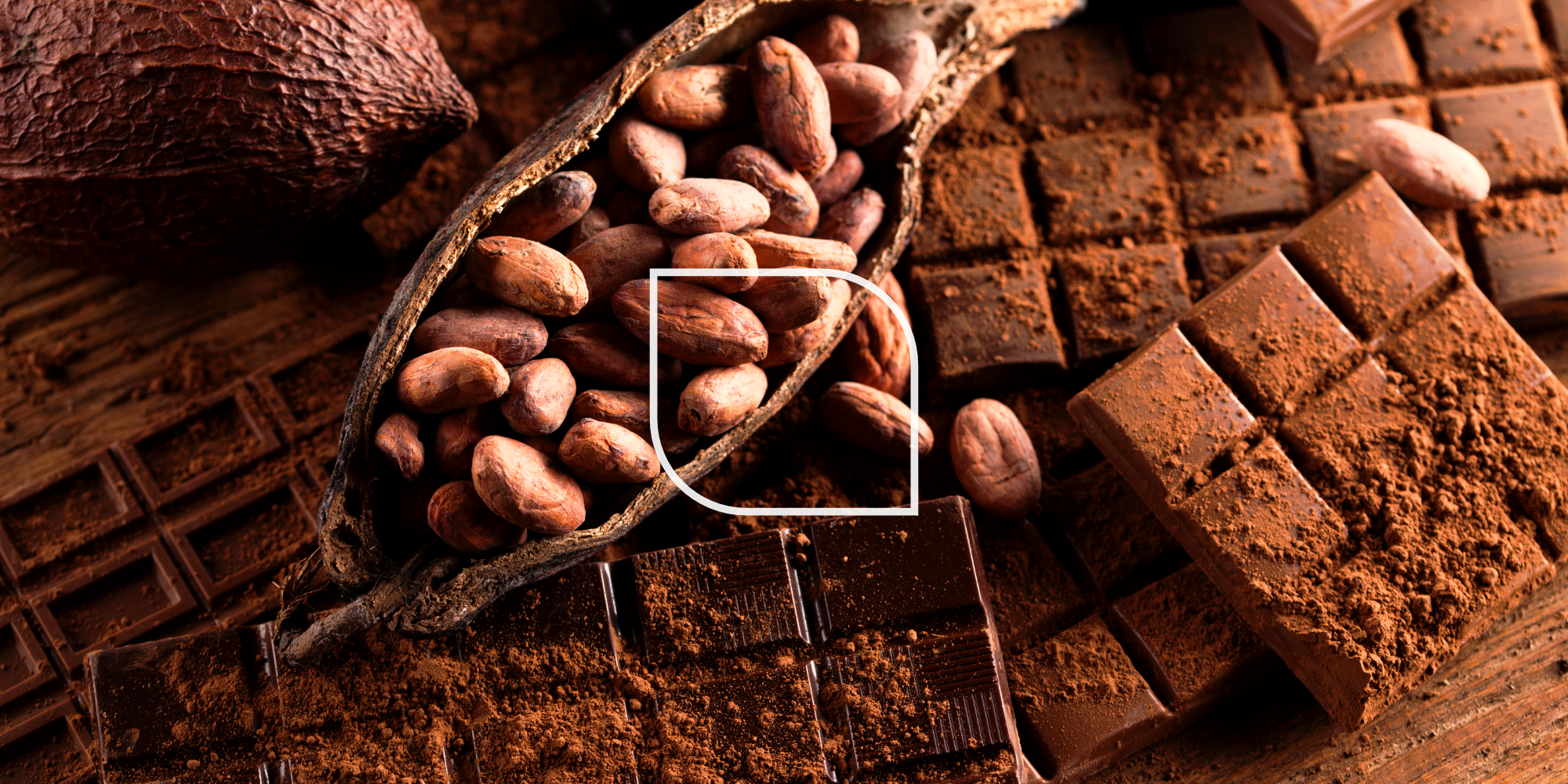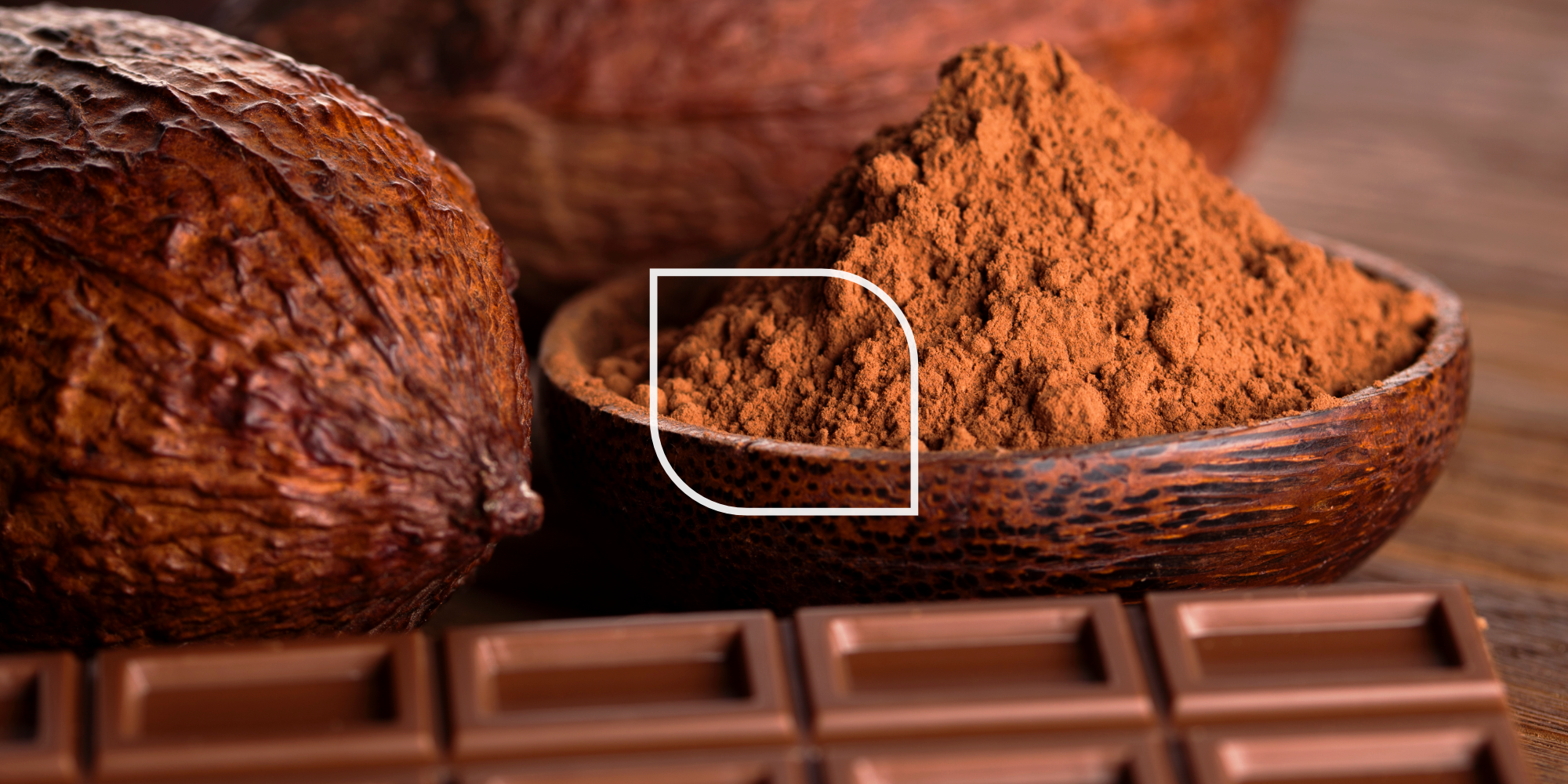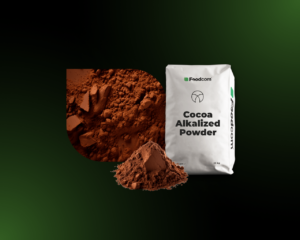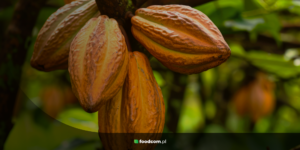- Cocoa is a popular health-promoting product with a distinctive chocolate flavour.
- On the Polish market we most often encounter alkalized cocoa of the Forastero variety.
- Cocoa powder comes in the form of alkalized and non-alkalized (natural) cocoa.
- Alkalized cocoa has better properties valued in food processing and a milder taste, but lower nutritional values.
Cocoa is a popular product in the food industry, extracted from the seeds of the cocoa tree (Theobroma cacao). It is used as a substrate for the preparation of beverages, baked goods or desserts, as an additive in food and cosmetic products. Let’s take a look at which types of cocoa we can find on the market, what the difference is between alkalized and non-alkalized cocoa and where they are used.
Cocoa – product characteristics
Cocoa has an intense, bitter taste, but when combined with fat, milk and sugar, it has been used as a food additive and substrate for many food products for many years. Cocoa has long been prized for its nutritional value – 100 g of cocoa powder contains about 20 g of protein and 10-15 g of fat, and is also rich in fibre, minerals and vitamins.
Cocoa’s properties of stimulation, mood enhancement, support of brain function and cardiovascular health are a result of the many health-beneficial substances contained in the cocoa bean. Indeed, cocoa contains ingredients such as:
- caffeine – a stimulant that acts as a stimulant,
- theobromine – an alkaloid that acts as a milder stimulant,
- antioxidants such as polyphenols and flavonoids, including catechins and epicatechins,
- vitamins, mainly B vitamins (thiamine, niacin, riboflavin),
- minerals: magnesium, iron, phosphorus, copper, potassium.
What types of cocoa can be found on the market?
Cocoa cultivation takes place in circumpolar regions. Most of the cocoa on the market comes from Africa – Ivory Coast, Ghana or Nigeria. However, US producers mainly use cocoa grown in the Indonesian region.
Most of the world’s cocoa – up to 80-90% of the world’s production – is of the Forastero variety. Another popular variety is Criollo, which are considered to have a milder taste. The well-known Trinitario is also a hybrid of the previous two varieties. These beans are considered to be of higher quality than Forastero. Criollo and Trinitario are grown in South America, while the African crop is entirely the Forastero variety.
Cocoa on the market is most often found in powdered form. Other products extracted from cocoa beans that are used as substrates in food production include cocoa mass and cocoa butter.
Cocoa mass or pulp is roasted, shelled and ground beans. This product can be used directly in the production of food products or further processed. In fact, dry beans and cocoa butter can be obtained from cocoa mass. Cocoa butter is used in the food industry and often also in the cosmetics industry. Dry beans, on the other hand, can be used to obtain cocoa powder – alkalinised or non-alkalinised.
What is the difference between alkalized and non-alkalized cocoa?
Alkalized and non-alkalized cocoa differ in their production process. This is because when alkalized cocoa is obtained, the process involves an additional step. Non-alkalized cocoa – what does this mean? It means nothing more than natural cocoa powder. It is made by grinding the dry beans produced by melting butter from cocoa mass using the Broma process or a hydraulic press.
Alkalinised cocoa powder is produced similarly, but the dry beans are soaked in an alkaline solution before grinding. For example, potassium carbonate, sodium carbonate or sodium hydroxide is used under sufficiently high pressure and temperature. Alkalized cocoa is also called black or Dutch cocoa because of the country where the process started to be used. Alkalization, or dutching, has been known since the 1820s. The process can vary in degree, depending on its duration, the solution used and its strength and temperature.
What does this mean in practice? Is alkalized cocoa less healthy than natural cocoa? Well, no – all it means is that alkalized cocoa has a neutral pH of around 7-8. Naturally, the pH of cocoa beans is acidic – between 5.3 and 5.8. What changes in the properties of cocoa does this bring? Dutch cocoa has:
- milder taste,
- darker colour,
- better solubility,
- three times less caffeine (78 mg per 100 g of powder, compared to 230 mg in natural cocoa),
reduced protein, amino acid and fat content, - fewer antioxidants – up to 98% less of certain polyphenols. However, even with the loss of some antioxidants, alkalized cocoa is still on the list of products rich in these substances.
Alkalinised and non-alkalinised cocoa – applications
How do you use non-alkalized and alkalized cocoa? For baked goods, alkalized cocoa gives a more predictable, velvety taste and texture. It is also darker, providing a more intense colour. Alkalized cocoa dissolves better in the fat or milk used for cooking, which improves the texture of the product. Often, the dough rises better when alkalized cocoa is used.
Non-alkalized cocoa, on the other hand, is good as an addition to a cake that requires leavening if you use baking soda, which requires an acidic environment for activation. When using neutral alkalized cocoa, be sure to include an acidic addition, such as replacing milk with buttermilk. You can also replace the baking soda with baking powder.
If you care about the nutritional value of cocoa, you can use natural cocoa as an addition to smoothies, muesli or cold desserts. This is because the heat causes the active ingredients in cocoa to be lost.
Alkalized cocoa, which has a milder taste, is mainly used for chocolate products. For those who prefer a rich, deep, intense cocoa flavour, non-alkalized cocoa will be more suitable.
It is impossible to directly answer the question of which cocoa is better – alkalized or non-alkalized. Each is good for specific uses. They differ not only in their taste, but also in their chemical properties. Most cocoa powders on the market are alkalized cocoa. Organic, non-alkalized cocoa is also available commercially. Depending on your needs, you can find high-quality alkalized and non-alkalized cocoa powder at Foodcom S.A..

